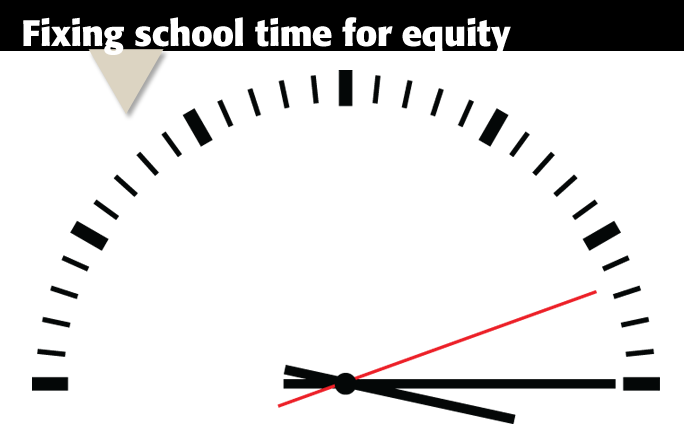
Some students spend 25 hours a week in school-related activities; others may spend three times that. And guess how that disparity influences outcomes.
As someone who’s worked in a range of schools, from inner-city schools to private boarding schools, I’ve concluded that there’s a straightforward explanation for why students in the inner city do relatively well through 3rd grade, then begin to fall by the wayside. It’s because of the amount of time that students from different backgrounds are engaged with school and school-related activities.
Let’s begin by looking at attendance rates in a range of schools, using high schools as the point of comparison:
- Urban schools. The average daily attendance for urban high school students is 70% to 75%, but for simplicity’s sake, make it 80%. That’s 4 out of 5 days. The school day is roughly six hours. Most students don’t take part in extracurricular activities. Homework, if it’s assigned and if it gets done, happens in class but not at home. City kids consider time outside of school their time, whether it’s for jobs, family responsibilities, or just hanging out. So 4 days per week x 6 hours per day = 24 hours per week.
- Suburban schools. Most suburban kids come to school every day, and the day is likely to be six to seven hours. With one or two hours of homework per night, the school day could extend to nine hours; 9 hours per day x 5 days per week = 45 hours. Students involved in sports or other extracurricular activities are likely to spend an additional 10 to 20 hours per week engaged with school.
- Private schools. At independent day schools, students are rarely absent, extensive homework is a given, and after-school activities are required. The school day is at least nine hours, with two to three hours of homework every night. Add weekend activities, and the total could rise to almost 70 hours per week.
- Boarding schools. Students in these schools have long instructional days, required extracurricular activities, and supervised study in the evenings. Faculty members may join them for meals, and they live in dorms with faculty residents. Students’ lives are controlled all day, every day, 168 hours a week.
It’s more than just time
Urban students are likely to be engaged in school and school-related activities about half the time of their suburban counterparts and one-third of the time of the advantaged kids who attend private schools. In the meantime, suburban and independent school kids are also going to summer camp, playing on the traveling soccer team, and taking guitar lessons. Add in religious school, tutoring, SAT prep classes, and e-learning in all its permutations, and you further extend the time they spend in school-related activities.
But it isn’t just the time differential that explains inequity. It’s also the opportunity for relating to adults in different settings in the classroom, on the athletic field, on the debate team, and at the dining table. Suburban high schools, independent schools, and boarding schools are organized to increase the likelihood that students will connect with concerned adults who become their mentors, coaches, and advocates. In the absence of such connections, the motivator for urban high school students may simply be the threat of failing high-stakes exit tests.
It isn’t just the time differential that explains inequity. It’s also the opportunity for relating to adults in different settings.
Another difference is the process of being socialized into professional work routines. Beginning lawyers, bankers, or doctors often need to commit to somewhere around a 90-hour work week. For clerks at Wal-Mart or bus drivers, however, anything above 35 to 40 hours constitutes overtime. Students at independent schools have learned to accept that 90-hour week. That kind of commitment is unimaginable to kids at urban high schools and one of the reasons they find college so challenging. Unknowingly, they’ve been prepared for the hourly workforce.
When it comes to engaged time in school, the kids who need the most clearly get the least. We can tighten standards and raise expectations all we want, enrich curriculum and add high-stakes assessments for frosting. We can add after-school tutoring, summer enrichment programs, and web-based supplemental courses, but they won’t overcome the time deficit. The truth is that addressing the achievement gap requires time before all things — and for most urban high school students, the time isn’t there.
Originally published in December 2016/January 2017 Phi Delta Kappan 98 (4), 80.
© 2016 Phi Delta Kappa International. All rights reserved.
ABOUT THE AUTHOR

James H. Lytle
JAMES H. LYTLE is adjunct practice professor at the Graduate School of Education, University of Pennsylvania and a former urban principal and superintendent.










